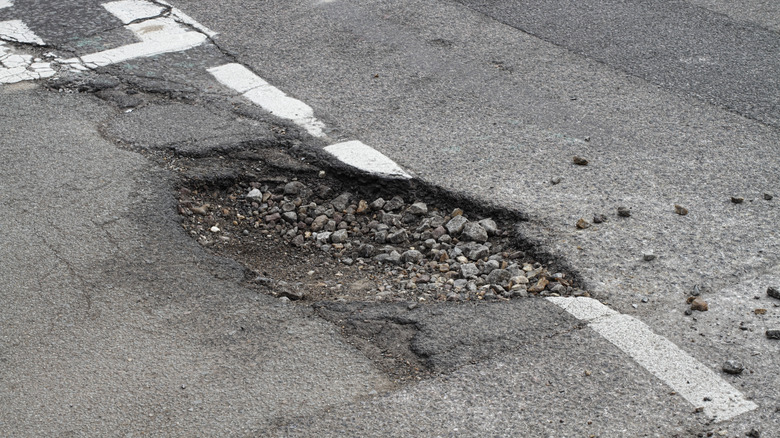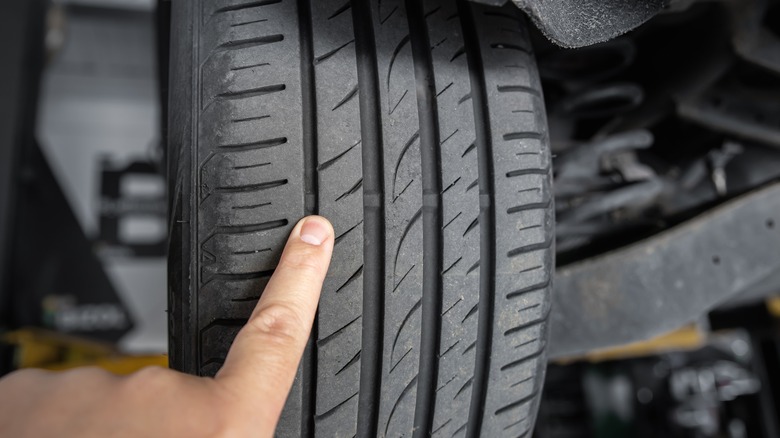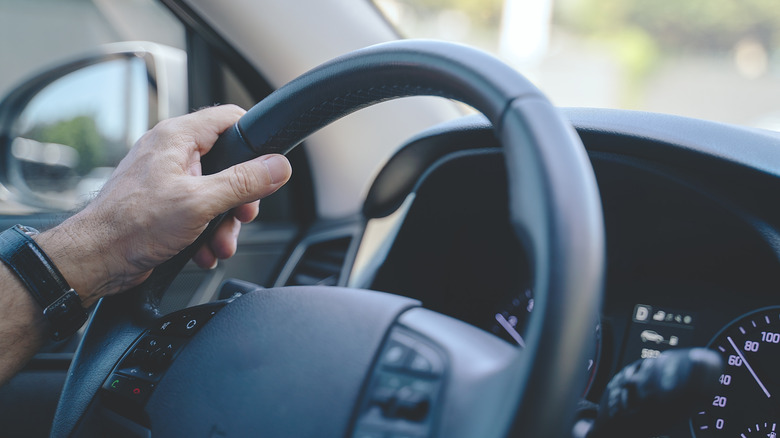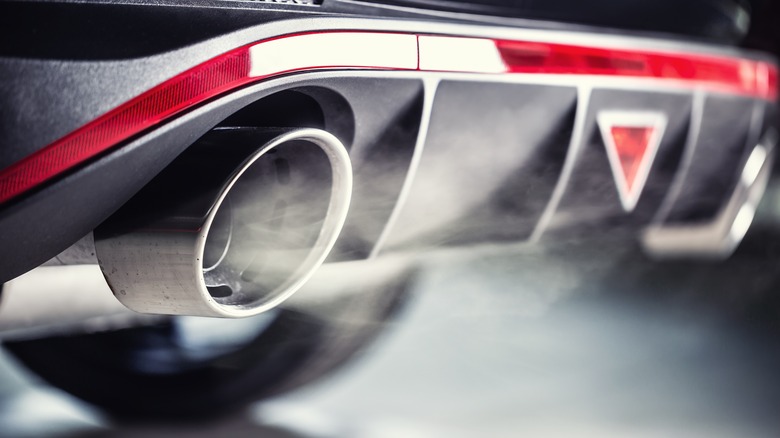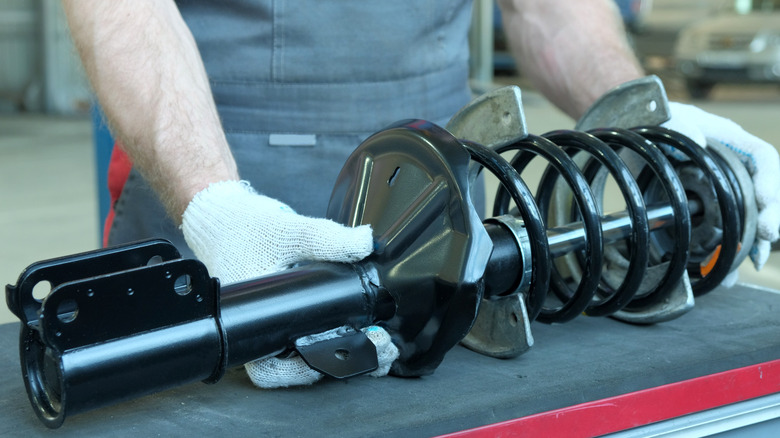Hit A Pothole? Here's 4 Signs You Need To See A Mechanic ASAP
When you're driving down the road and encounter a pothole, oftentimes you either don't see it and drive right over it (or you see it and go full speed anyway); It's just a pothole, after all. Surely one little hole can't do any lasting damage to your sturdy automobile, could it? You'll usually get your answer a moment later when your car bounces into the air, followed by a disconcerting crunching sound and the distinct feeling that you've made a mistake.
Even if you don't experience such an overt result from hitting a pothole full-on, there's a very real possibility that your car has suffered some kind of damage from doing so. Commercial cars aren't designed to handle that kind of sudden vertical lurch, so the parts on the lower side of the carriage could have been directly impacted. You should keep an eye out for certain warning signs of pothole-induced damage, and make an immediate appointment with your mechanic if you notice them.
Visible wheel and tire damage
The very first thing you should be on the lookout for after hitting a pothole wrong is obvious signs of damage to your wheels and tires. Flat and punctured tires are the prime suspect here, as the impact from the pothole could have poked a hole in one of them, especially if the terrain is uneven or craggy. However, that is not the only thing that could go wrong.
Depending on the severity of the impact, as well as any existing wear on your wheels, you may find signs of tread wearing or bubbling on the tires or their inner lining. Worse, the wheels themselves could have been warped or bent. If you receive a low tire pressure warning on your dashboard and the tire itself doesn't look obviously flat or warped, that could mean the wheels have been impacted, which is even worse. Either way, you need a tire expert, pronto.
Wobbling, pulling steering
When you get your car serviced, one of the most vital checkpoints is a suspension realignment. All four of your car's wheels need to be in perfect alignment so that, when you turn the steering wheel, they all turn in the same direction at the same time. If you had the steering wheel cut in a particular way when hitting a pothole, though, one of your wheels may be forcefully bent out of alignment with the others.
Controlling the car will become more difficult if your suspension has been knocked out of alignment. The steering wheel may become wobbly or shaky as one of the tires rotates in a different direction from the others, or you may experience a "pulling" effect where your car starts listing to the side even when the steering wheel is centered. Messed-up steering is dangerous on an active road, so that must be immediately realigned.
Sputtering, leaking exhaust
The lowest part of your car to the ground may be the tires, but the second-lowest part is the exhaust, which means it's next in line if you experience a severe lurch from a pothole. If the pothole is deep enough or your car bounces high enough, the tip of your exhaust pipe could get slammed onto the ground. Considering that pipe is meant to prevent toxic exhaust from building up in your car, that's definitely not a good thing.
As you drive, keep your eyes and ears open for signs of exhaust damage, including a distinctive sputtering sound from the rear of your car and fluid leaking onto the road. If you see or hear these symptoms, it could mean that the exhaust pipe, as well as its associated components, have been directly impacted. A damaged exhaust can put you on the fast track to total engine failure, which means it needs to be examined and repaired immediately.
Bouncing and bottoming out
The suspension system on most commercial cars is designed to absorb and disperse light impacts, like an occasional bump or uneven terrain. This is what keeps your ride more or less even at all times. However, your car is not a dune buggy -– if it receives too heavy of an impact on its bottom, its shock-absorption system could sustain damage, either lessening its effects or disabling it entirely.
If your shocks and springs have been damaged, you may experience a much rougher, bouncier ride, even on relatively level terrain. Not only is this generally uncomfortable, but a nonfunctioning shock system increases the likelihood that a sudden lurch, even a small one, could cause your car to bottom out, scraping its undercarriage along the road. A bottom-out would severely exacerbate any existing damage and is naturally unsafe besides. Unless you want to drive around in an exaggerated clown car, you should get that checked out.
